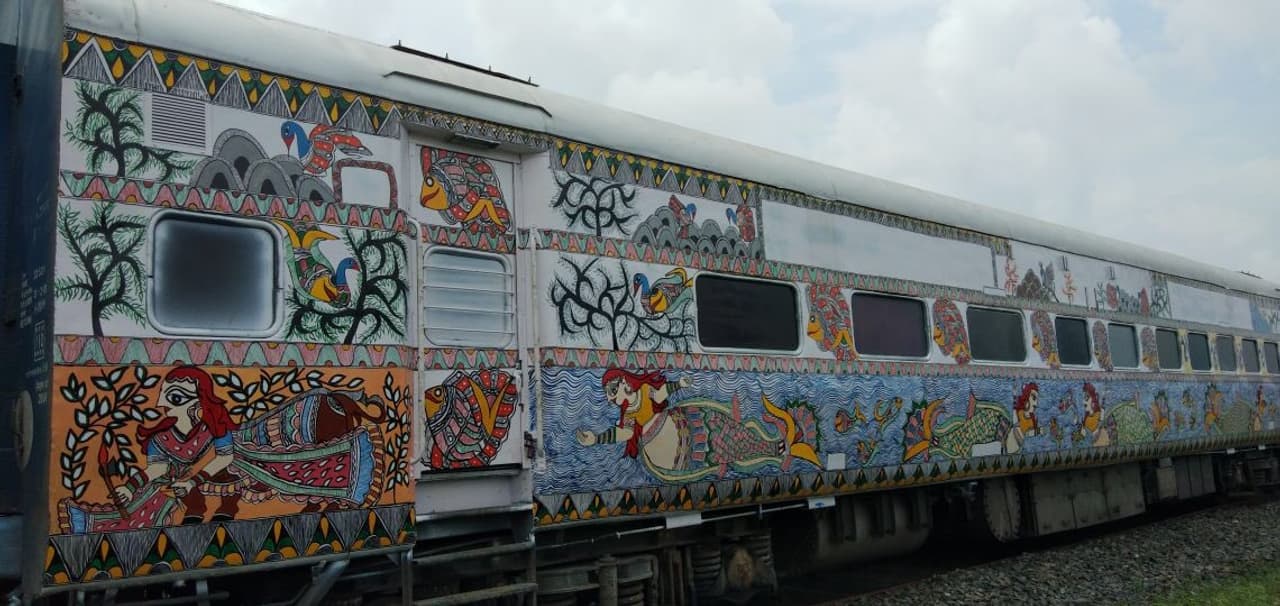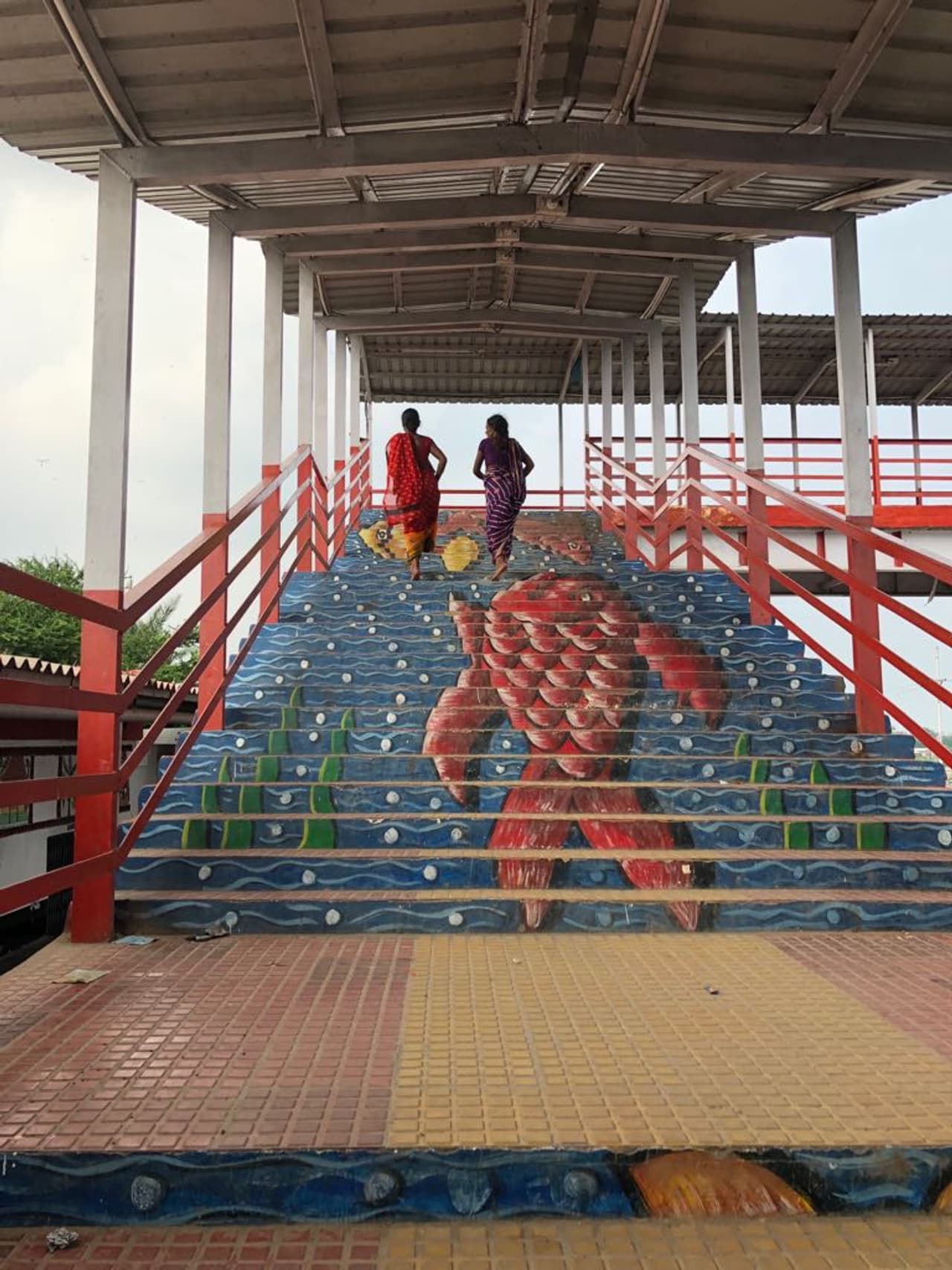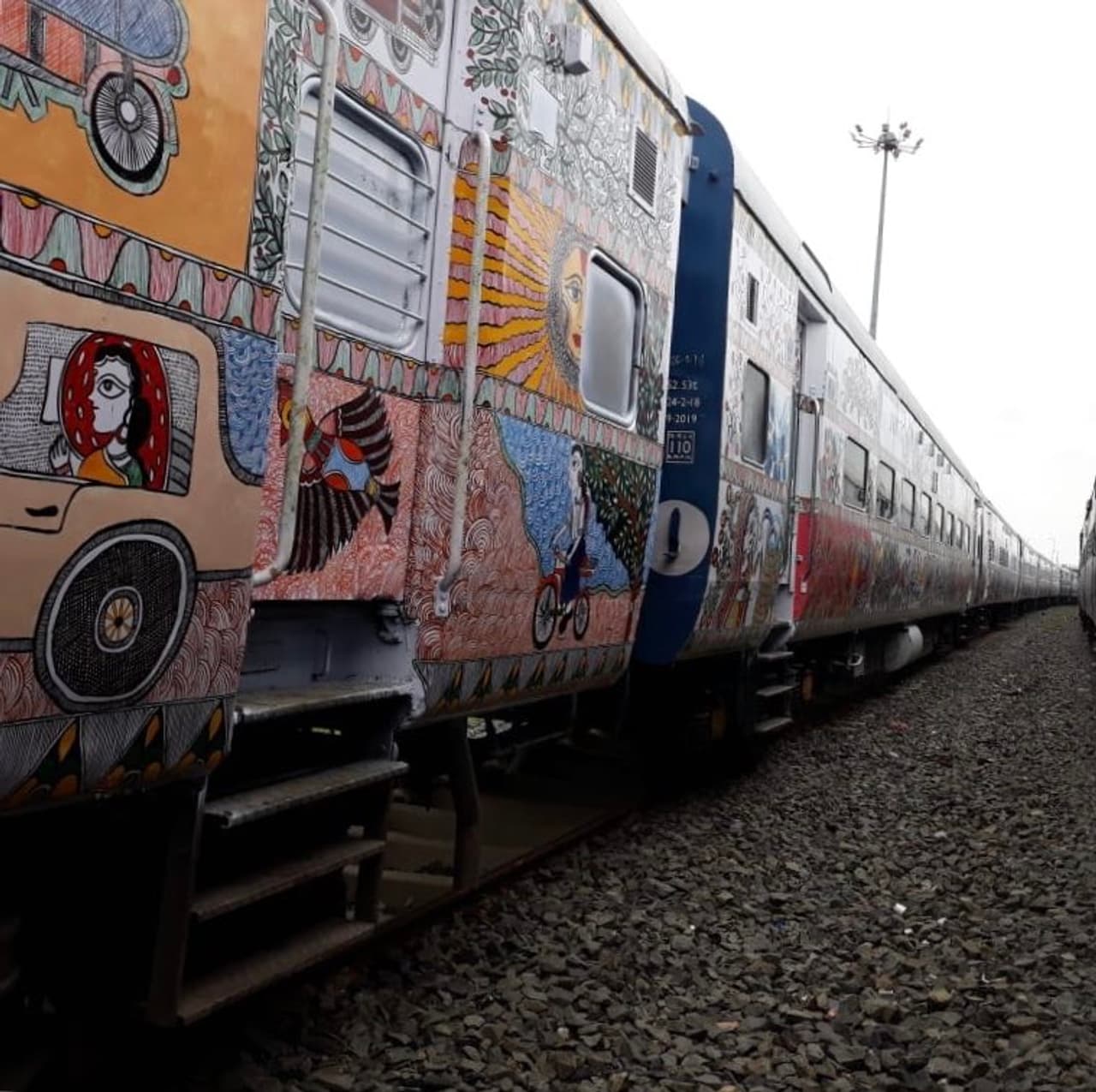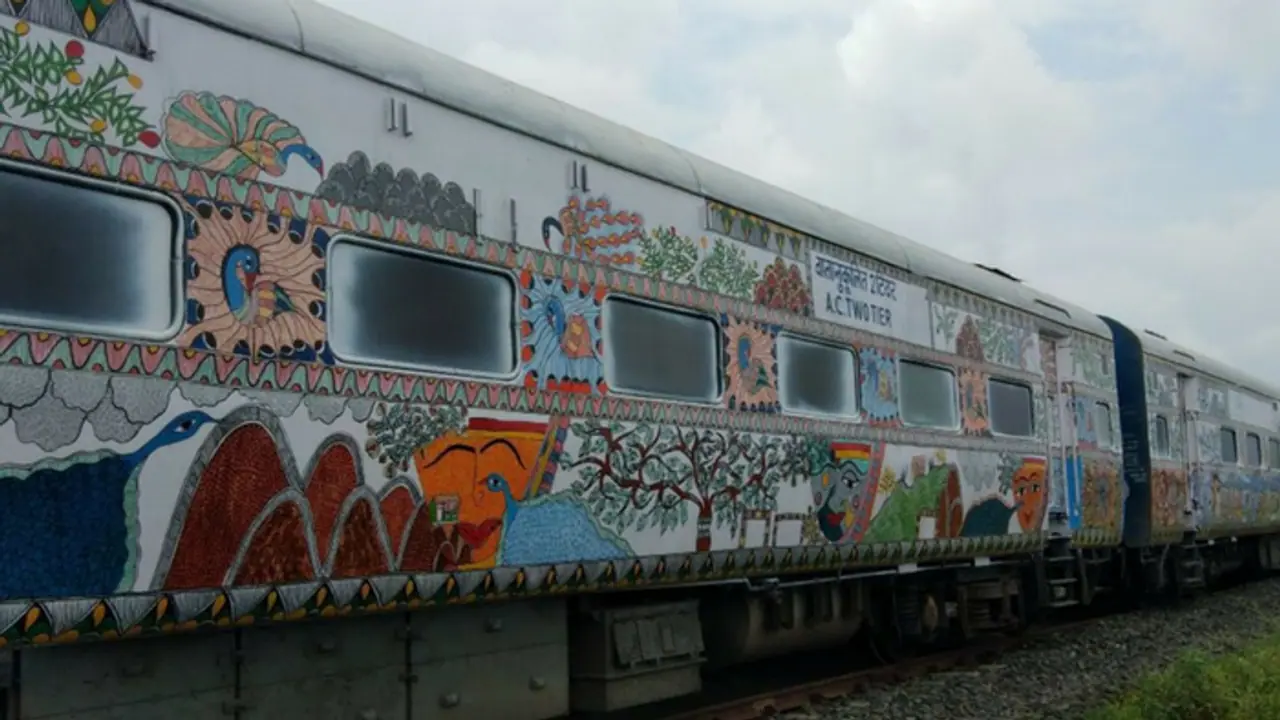Bihar Sampark Kranti Express is set to arrive in the national capital on Thursday painted with vibrant Mithila motifs showcasing unique geometrical patterns and ritual content of various occasions
As many as 45 artisans, of which 43 are women, sweated out day-in and day-out for over a month to paint Bihar Sampark Kranti Express with vibrant Madhubani art - a traditional folk art popular in Mithila region of Bihar.
The superfast crawler is set to arrive in the national capital on Thursday painted with vibrant Mithila motifs showcasing unique geometrical patterns and ritual content of various occasions.
The initiative was taken by the Indian Railways to promote the colourful heritage of the country and to take it to the global arena through wheels.
The whole process of painting the railway coaches began on July 24 this year. At least nine bogies have already been painted with Madhubani art. Madhubani art was first adorned on the walls of Madhubani railway station in Bihar. The move was welcomed by tourists coming in from various parts of India as well as abroad.

Sources said all nine painted coaches would be attached with the train at the Samastipur Division of the East Central Railway. The superfast train runs from Darbhanga, Bihar to Delhi.
According to Ashutosh Saw of KSB Crafts, the local agency that was involved in the beautification of the train, it was a much-needed boost to encourage the rural Madhubani artisans who are practising the art form through ages.
“We tried to convey some messages of social awareness, women empowerment, rural culture of the region and different means of Indian transport facilities on all nine bogies,” Saw told MyNation.

He said that talks are on to paint another superfast train, Satantra Senani Express, with Madhubani art. Similarly, the Patna-Delhi Rajdhani will soon be rolled out with the colourful Madhubani paintings both inside and outside of the coaches.
Often characterised by beautiful patterns and colourful story-telling, Madhubani painting is one of the many famous Indian art forms that originated in the Mithila region of Bihar and Nepal.

According to experts, some of the initial references to Madhubani paintings can be found in the Hindu epic Ramayana when King Janaka, Sita’s father, asks his painters to create Madhubani paintings for his daughter’s wedding.

They said the artistic lineage is being carried forward through generations to adorn the houses of the region. The women of the village mostly practised these paintings on the walls of their homes, often illustrating their thoughts, hopes and dreams. The colours used in Madhubani paintings are usually derived from plants and other natural sources.
